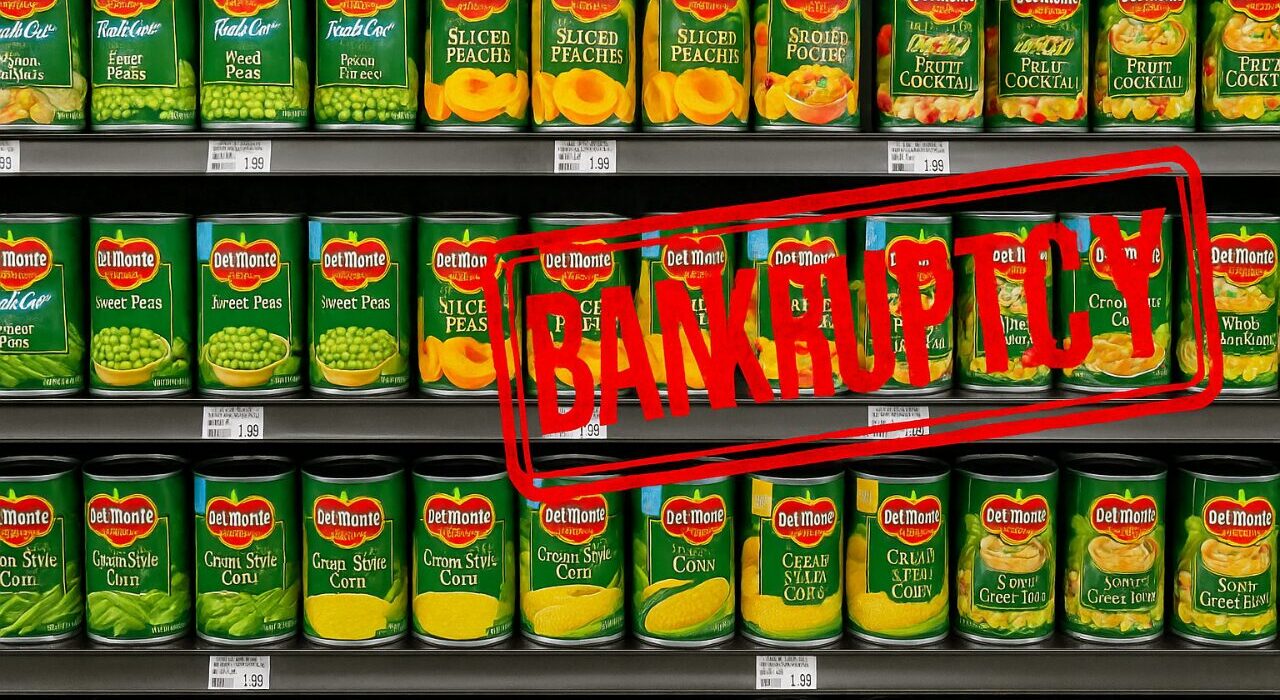New York: Del Monte Foods, the 138-year-old American food giant known for its canned fruits and vegetables, filed for Chapter 11 bankruptcy protection this week in the U.S., marking a major moment in the packaged food industry. The filing comes amid growing debt, changing consumer habits, and a shifting grocery landscape. With more than a billion dollars in liabilities and thousands of creditors, the company is preparing for a restructuring and potential sale of its assets.
The bankruptcy filing does not mean Del Monte is shutting down immediately. Instead, the company aims to continue operations while reorganizing under court supervision. This includes a plan to sell parts of its business to raise capital and pay off creditors. A temporary loan has been secured to help the company keep running during this transition.
For generations, Del Monte has been a staple in American pantries, offering products like canned peaches, corn, green beans, and pineapple. But the rise of fresh food preferences, budget-conscious private labels, and supply chain challenges have slowly eroded its market share. Now, the company faces a fight for survival—and it’s playing out in bankruptcy court.
Also Read: Bus Crash at Port Authority Injures 14, Shuts Down Lincoln Tunnel Ramp
Why Did Del Monte Foods File for Bankruptcy?
Del Monte’s financial struggles have been building for years. Mounting debt, declining shelf sales, and rising logistics costs all contributed to the decision to file for bankruptcy. The company had taken on significant liabilities to keep pace with a rapidly changing food industry—one that now favors fresh, organic, and locally sourced products.
Despite attempts to diversify its portfolio with newer offerings like fruit cups and ready-to-drink teas, Del Monte couldn’t recover fast enough. Its heavy reliance on canned goods became a liability, especially as younger shoppers moved toward healthier and more sustainable options. Retailers, too, began prioritizing cheaper store brands over legacy names.
The decision to file under Chapter 11 allows Del Monte to reorganize its business without fully closing down. This legal process gives the company a chance to renegotiate contracts, reduce debt, and prepare for a more competitive future.
What Happens to Del Monte Products in Stores?
For now, Del Monte products will remain on shelves. The bankruptcy filing ensures that day-to-day operations can continue while the company restructures. That includes fulfilling orders, paying staff, and shipping goods to grocery stores nationwide.
Shoppers likely won’t notice immediate changes at the register. However, depending on how the restructuring unfolds, Del Monte may downsize its product lines, rebrand, or even sell off some of its most well-known labels. These decisions will be made over the coming weeks and months as part of the court process.
Employees, vendors, and retail partners are watching closely. While the company has secured short-term financing to stay afloat, the longer-term picture will depend on whether it can attract buyers or investors willing to bet on a turnaround.
Who Is Affected by the Bankruptcy?
The ripple effect of Del Monte’s bankruptcy will extend far beyond its own headquarters. Thousands of creditors—including trucking companies, packaging suppliers, and logistics partners—are now waiting to see how much, if any, of their outstanding payments will be recovered.
Large freight and logistics providers, which helped move Del Monte’s products across the country, are among those most directly impacted. Some are owed millions of dollars in unpaid invoices. While some post-bankruptcy services will be repaid under special protection, pre-bankruptcy debts may not be fully covered.
Consumers could also feel the effects down the line if certain products disappear from store shelves or prices are adjusted as part of a recovery strategy.
What Comes Next for Del Monte Foods?
Del Monte now enters a critical phase. With a bankruptcy court overseeing its restructuring, the company will begin evaluating which parts of its business to keep, sell, or wind down. Executives will work to identify interested buyers or investors while maintaining operations.
The short-term loan arranged during the filing provides a financial cushion—but only temporarily. To survive long-term, Del Monte will need a clear plan for rebuilding profitability and relevance in a competitive grocery market.
Industry analysts say the future of Del Monte depends on its ability to evolve. Whether through a buyer acquisition or leaner operations, the next chapter for this American pantry icon will likely look very different from its past.







